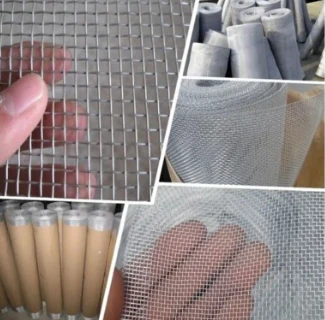Understanding Galvanised Stay Wire A Comprehensive Overview
Galvanised stay wire plays a crucial role in various industries, particularly in construction, telecommunications, and agriculture. As a type of wire that undergoes galvanisation—coating with zinc to prevent rust and corrosion—stay wire provides the durability and strength required for stabilizing structures and supporting equipment. This article delves into its applications, benefits, and the manufacturing process, offering insights into its importance.
What is Galvanised Stay Wire?
Galvanised stay wire is characterized by its high tensile strength and resistance to environmental factors due to its protective zinc layer. Typically made from steel, the galvanisation process involves hot-dipping the wire in molten zinc or electroplating it, resulting in a robust barrier against corrosion. This makes galvanised stay wire an ideal choice for projects exposed to harsh weather conditions, moisture, and other corrosive agents.
Applications of Galvanised Stay Wire
The uses of galvanised stay wire are extensive, spanning several sectors
1. Telecommunications In telecommunications, stay wires are essential for supporting tall structures like cell towers. They provide critical stability, ensuring that these towers withstand heavy winds and environmental stressors.
2. Construction In the construction industry, galvanised stay wire is utilized in scaffolding, reinforcement of buildings, and frameworks. It supports structures under construction and can be used for guy wires, anchoring masts or towers securely in place.
3. Agriculture Farmers often use stay wire for fencing, trellising, and securing agricultural equipment. Its durability ensures that it can withstand the rigors of outdoor use, including tension applied from livestock or crops.
4. Utility Poles Stay wires are crucial in securing utility poles, particularly for electricity and telecommunication lines. By providing stability, they help maintain proper alignment and minimize the risk of pole toppling.
Benefits of Galvanised Stay Wire
galvanised stay wire

The advantages of using galvanised stay wire are manifold
- Corrosion Resistance The galvanisation process ensures that the wire can withstand exposure to moisture, chemicals, and environmental pollutants without deteriorating.
- Longevity With its protective coating, galvanised stay wire typically lasts significantly longer than non-galvanised alternatives, reducing the need for frequent replacements.
- Strength Galvanised stay wire possesses high tensile strength, making it suitable for applications where strong support is essential.
- Cost-Effective Though the initial investment might be higher than that of regular wire, the longevity and reduced maintenance costs associated with galvanised stay wire make it a wise financial choice over time.
Manufacturing Process
The creation of galvanised stay wire begins with selecting high-quality steel, which is then drawn into wire of desired dimensions. The wire undergoes the galvanisation process, either through hot-dipping or electroplating.
1. Hot-Dip Galvanisation This method involves cleaning the wire and dipping it into a bath of molten zinc. The reaction between the zinc and steel forms a metallurgically bonded coating that offers robust protection against corrosion.
2. Electroplating An alternative method, electroplating involves using an electric current to deposit a layer of zinc onto the wire surface. While this method results in a thinner coating compared to hot-dipping, it is often used for lighter applications where corrosion resistance is still needed.
Conclusion
In summary, galvanised stay wire is an indispensable material in various sectors, providing stability and support in an array of applications. Its corrosion resistance, strength, and cost-effectiveness make it a preferred choice among professionals. Whether used in construction, telecommunications, agriculture, or other fields, galvanised stay wire demonstrates its value through longevity and reliability. As industries continue to seek durable solutions for their structural needs, the significance of galvanised stay wire will undoubtedly remain pertinent.

















